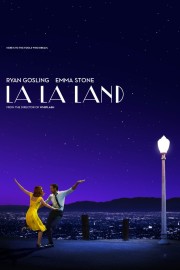La La Land
The moment that stands out to everyone from Damien Chazelle’s previous film, “Whiplash,” is when the abusive jazz teacher tells his student, “There are no two words in the English language more harmful than “good job”.” Mia and Sebastian, the main characters of his next film, “La La Land,” haven’t even been told that. Mia is an aspiring actress, who works at a coffee shop on the Warner Bros. lot, who can barely keep the casting director’s attention in an audition, while Sebastian is a jazz pianist who has the chops, but really wants to own a jazz club to share his love of the genre with others. As their lives seem to move parallel to one another throughout the first half of the film, they fall in love, but after a while, feel the pull all creative people do between passion and practicality. Which will win out, and will love follow suit?
Chazelle has a technical savvy that seems to trump everything in his films based on these two, but he understands how powerfully great music can change our view of a film. This is a pretty standard-issue Hollywood/Los Angeles story, told many times before, but it’s the way Chazelle develops the musical aspects of the film, and how they fit into the story of Mia (played beautifully by Emma Stone) and Sebastian (Ryan Gosling), that causes the film to become something akin to transcendent. Neither Stone nor Gosling are natural singers, so Chazelle’s warms them up slowly before giving them their big moments to shine. The culmination of that build up is the Oscar-nominated “City of Stars,” which is hardly a traditional love ballad for a musical, and is all the better for it. The jazz elements incorporated in the film keep this from being another Broadway-cloned musical, as is the fact that the songs sneak up on us and come organically out of the scenes and emotions felt. This is very much a musical, but it’s more of a love story with musical elements interspersed to accentuate the emotions of the scenes. The finest example of this, apart from “City of Stars,” is near the end when, after time apart, Sebastian has to get in touch with Mia for a surprise audition after her one-woman-show she has put on failed, and the time away from each other because of Sebastian’s obligations to a jazz hip-hop band put on by an old friend (John Legend) have strained things. He gets Mia to go on the audition, and it is a perfect situation for her to shine, and the song it turns into, “Audition (The Fools Who Dream),” hit me right in the gut. Over the past year or so, the struggle between passion and practicality that becomes the center of this film has been much on my mind, and Mia and Sebastian’s struggles with the issue, which builds to this scene unexpectedly, are the beating heart of this film. I think I had a hard time identifying with “Whiplash” because of the extreme place the teacher-student relationship went. I completely understand these characters, where they are coming from, and why they make the choices they do in this film. And the way Cazelle wraps up his endlessly wonderful film, with its emotional highs and lows, and soul-stirring music, is a surprising expression of the innermost thoughts both must be feeling when, five years after that audition, they catch each others’s eyes for the first time in a while. This is a tricky sort of film to get right. Chazelle makes it look easy, and doesn’t break a sweat, even when his actors are giving it their all in roles we aren’t used to seeing them in. All three make “La La Land” unmissable cinema, and an unforgettable experience.










